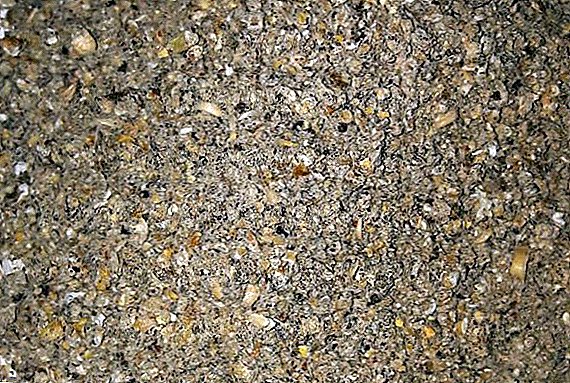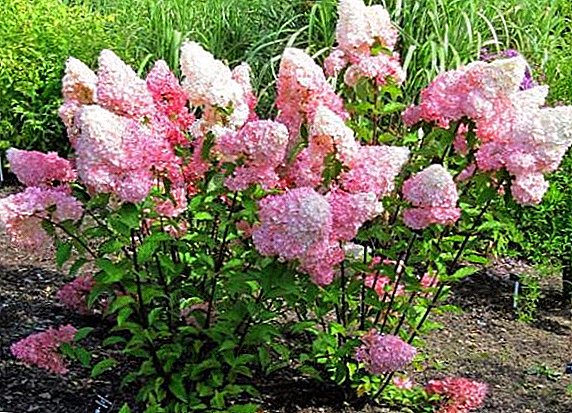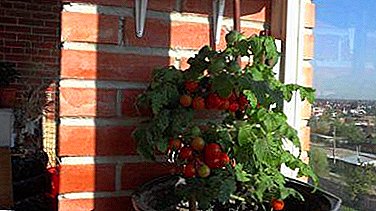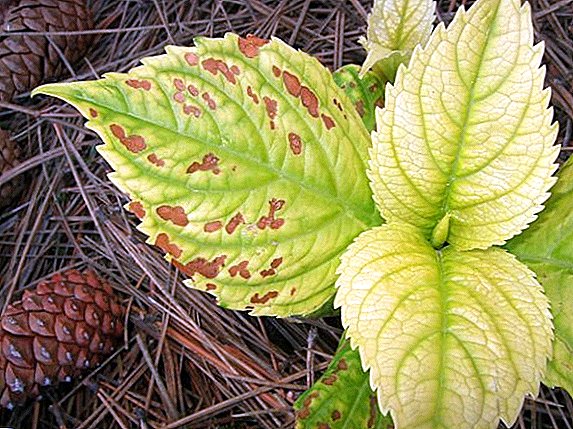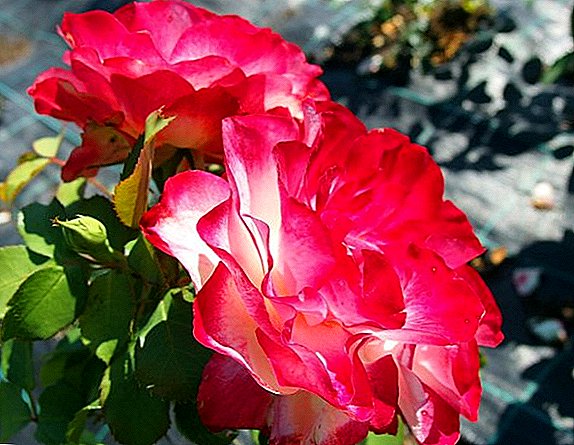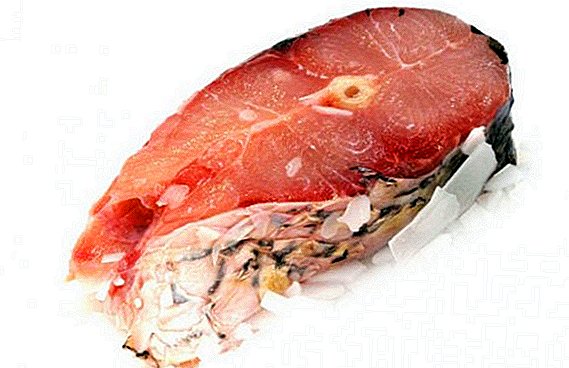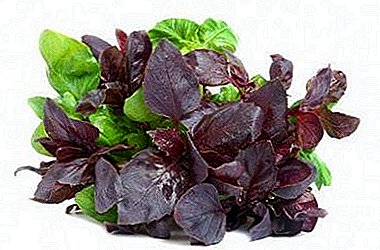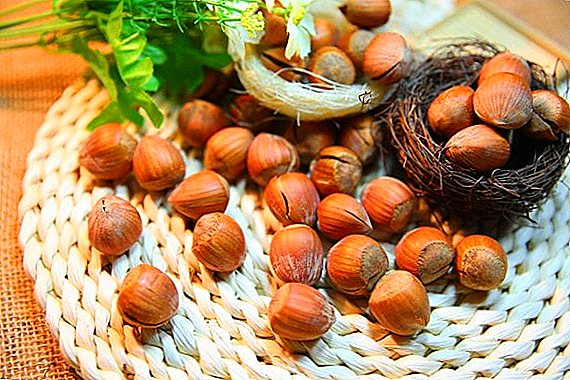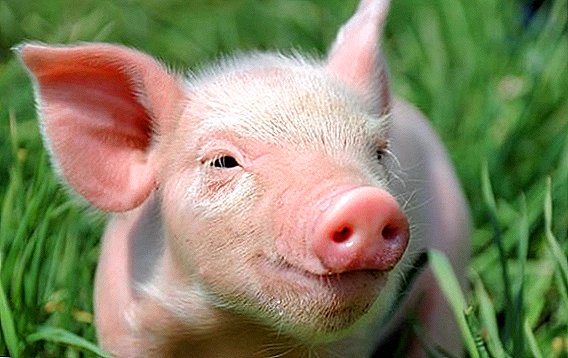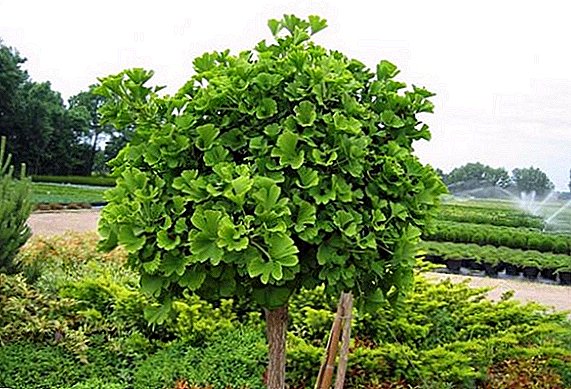 "Buddha's nails", duck paws, silver apricot, "butterfly wings" - under such unusual names mentioned ginkgo biloba in the first reference book of medicinal plants, which is more than 5 thousand years old. This is an unusual plant with an amazing history: Ginkgo has existed on the planet since the days of dinosaurs, and since then has not changed its appearance at all. It is on the list of the top 5 best-selling plants in the world, is a wonder drug and a wonderful decorative look. On the unusual properties of ginkgo and the rules of its cultivation, let's talk further.
"Buddha's nails", duck paws, silver apricot, "butterfly wings" - under such unusual names mentioned ginkgo biloba in the first reference book of medicinal plants, which is more than 5 thousand years old. This is an unusual plant with an amazing history: Ginkgo has existed on the planet since the days of dinosaurs, and since then has not changed its appearance at all. It is on the list of the top 5 best-selling plants in the world, is a wonder drug and a wonderful decorative look. On the unusual properties of ginkgo and the rules of its cultivation, let's talk further.
History reference
Ginkgo biloba, or ginkgo bilobed (Ginkgo Biloba), is the only currently existing representative of its species Ginkgo. The plant is considered a relic and endemic, that is, a plant from ancient geological eras, similar species which died hundreds of thousands and millions of years ago.  Such plants are also called isolates, because their survival rate is explained by isolation from the more advanced evolutionary representatives.
Such plants are also called isolates, because their survival rate is explained by isolation from the more advanced evolutionary representatives.
Did you know? Ginkgo along with other plants and animals is called the common term "living minerals". Surprisingly, so familiar crocodiles, marsupial animals, some lizards, sequoias, horsetails and other lesser known species belong to living minerals. Experts say that the longevity of a single species varies within a few million years. These species live in a completely unchanged state for hundreds of millions of years! For example, some marine invertebrates have not changed their appearance for about 380 million years.
This species appeared about 300 million years ago. In the heyday of the species (the Jurassic period), there were more than 15 species, but now only Ginkgo bilobed is preserved.
Botanical description
Ginkgo biloba is a majestic, deciduous, huge tree. It can reach from 15 to 40 meters in height. In the first 10-20 years it grows slowly, has a symmetrical conical crown. Further, this symmetry disappears, and the tree becomes wide, with long spreading branches. By the age of 10 years, the plant already reaches about 12 meters.
The leaves are painted in a light green shade, fan-shaped, long-petiole, leathery and sinewy. In autumn, they become golden yellow. The root system is strong, deep. Older representatives can form aerial root growths on the trunk and the lower part of large branches, which can reach one meter in length. But the purpose of these growths is still poorly understood.  The flowering period falls on May. After pollination of female flowers, yellow plum-shaped fruits are formed, which resemble nuts covered with a thick layer of juicy and fleshy pulp. It produces a very unpleasant odor due to the high concentration of butyric acid. Fruits quickly rot and fill the space around with a pungent smell. Ginkgo breeds with the help of vegetation and seeds.
The flowering period falls on May. After pollination of female flowers, yellow plum-shaped fruits are formed, which resemble nuts covered with a thick layer of juicy and fleshy pulp. It produces a very unpleasant odor due to the high concentration of butyric acid. Fruits quickly rot and fill the space around with a pungent smell. Ginkgo breeds with the help of vegetation and seeds.
Spread
Now it is impossible to establish which region is the true homeland of this species. It is known that in the wild the plant can be found in some parts of China. Studies show that in the past, ginkgo on the territory of present-day Russia was just as ordinary a tree as it is now of linden, maples and birch.
Absolutely all ginkgo trees, in addition to populations in China, are of artificial nature. The plant is often used for decorative purposes, as well as for landscaping. Ginkgo is resistant to dust and gas, resistant to radiation. In addition, the plant belongs to long-livers - lives up to 1000 years and even more.
We recommend you read about the life expectancy of trees.
Chemical composition of wood
Wood has a unique chemical composition, which includes powerful antioxidants and many other active substances, namely:
- flavonoids;
- organic acids;
- wax;
- fat and essential oils;
- starch and sugar;
- protein (identical in composition to protein legumes);
- vitamins (A, C, E, PP);
- resin.
 Such a rich composition and provides the plant with long years of life and great endurance to environmental conditions. So, the ginkgo "survived" the fall of meteorites, the ice age, atomic explosions and the constantly increasing level of environmental pollution due to human activity.
Such a rich composition and provides the plant with long years of life and great endurance to environmental conditions. So, the ginkgo "survived" the fall of meteorites, the ice age, atomic explosions and the constantly increasing level of environmental pollution due to human activity.Medicinal properties
Even in ancient China, they understood how widespread the use of this plant is to cure ailments. So, it can be used for:
- normalization of blood circulation;
- strengthening and expanding blood vessels (angioprotective effect);
- normalization of vision;
- slowing the aging of tissues (antioxidant effect);
- prevents spasms (but if the spasm comes, does not remove them);
- improves the work of the central nervous system;
- normalizes blood pressure and heart rate;
- prevents the deposition of cholesterol plaques;
- reduces blood viscosity and improves its composition;
- improves venous blood flow.
Did you know? To get 450 g of the extract of this plant, you need to process up to 35 kg of ginkgo leaves!
Medical applications
Leaves and fruits of the plant are used for medicinal purposes. Ginkgo foliage is recognized as the official medicinal raw material in European countries, and the fruits are used for the preparation of medicines in Japan, Korea and China.
From these parts an extract is prepared, which can be used for such ailments:
- erectile dysfunction of vascular genesis;
- violation of cerebral circulation (to eliminate tinnitus, emotional lability, reduced attention, reaction and memory);
- in acute cerebrovascular accident - stroke;
- blurred vision;
- cough;
- asthma;
- allergic manifestations;
- oncological diseases (with the aim of slowing metastasis, detoxification and toning of tissues);
- hearing disorders of vascular genesis (hearing loss, tinnitus, dizziness, disorders of the vestibular apparatus).
 In general, ginkgo extract and preparations based on it are most often used for illnesses caused by any vascular disorders: insufficient blood and lymph flow, vasoconstriction or vasospasm, abnormal blood composition, high blood viscosity, impaired peripheral blood circulation and other pathologies.
In general, ginkgo extract and preparations based on it are most often used for illnesses caused by any vascular disorders: insufficient blood and lymph flow, vasoconstriction or vasospasm, abnormal blood composition, high blood viscosity, impaired peripheral blood circulation and other pathologies.Ginkgo helps eliminate these symptoms, due to which the disease recedes. The most serious diseases that ginkgo can prevent are heart attack and stroke.
Tincture of leaves
For the preparation of tools will need:
- 100 g of raw materials;
- 1 liter of alcohol (40%).
Tincture needs to be kept in a dark place for 2 weeks, daily capacity should be shaken. At the end of the term, strain the drug and store in the refrigerator. The course of treatment lasts a month, during the year it is necessary to conduct 3 therapeutic courses.  Take the tincture is recommended for 15 drops, diluted in half a glass of water. Drink in the morning and evening, 30 minutes before meals. There are no restrictions in age when treating with tincture, however, it is necessary to consult a doctor before treating children and teenagers.
Take the tincture is recommended for 15 drops, diluted in half a glass of water. Drink in the morning and evening, 30 minutes before meals. There are no restrictions in age when treating with tincture, however, it is necessary to consult a doctor before treating children and teenagers.
This tool is used to eliminate violations of blood circulation. It can also be applied externally to the skin of the face: such a tincture perfectly tones, cleanses and rejuvenates the skin.
Tea
Ginkgo leaf tea has a mild therapeutic effect on the entire body. It is a powerful stimulant of brain activity, improves memory, concentration, strengthens the immune system, reduces inflammation.
Important! Brewing raw materials for tea can be only once, because when reused, the ginkgo leaves lose all useful properties.
Also, tea is a diuretic, antiviral and decongestant.
With a monthly tea intake course, an improvement in the functioning of all body systems can be noted. After this period, you must pause for two weeks, then take the product again. If possible, it is recommended to replace this drink with ordinary black and green tea, as well as coffee.
To make tea you need to use boiled water, but not boiling hot water! Allow the water to cool to 80 ° C. Pour 1 tsp. raw glass of water, leave to infuse for 5 minutes. 
Contraindications and possible harm
In general, ginkgo is a relatively safe plant, the frequent use of which only rarely can cause nausea, indigestion or headaches.
Contraindications for taking ginkgo-based products are:
- period of pregnancy, lactation;
- children's age (up to 16 years);
- before surgery;
- during the period of taking drugs to reduce blood viscosity;
- in acute inflammatory processes in the stomach;
- excessive sensitivity.
Growing up
As noted above, ginkgo is an extremely resistant plant to adverse environmental conditions. So, he copes with the lack of light, frost, and heavy pollution in urban environments.  The tree is not demanding on the readings of the soil in terms of pH and humidity. Therefore, even an amateur will be able to grow an unusual beautiful tree in his plot.
The tree is not demanding on the readings of the soil in terms of pH and humidity. Therefore, even an amateur will be able to grow an unusual beautiful tree in his plot.
You can also decorate your plot with such trees as: red maple, ash-leaved maple, white acacia, larch, white willow, birch, catalpa, chestnut, elm, hornbeam, or pyramidal poplar.
Selection and lighting
If you decide to get a long-term handsome man, the most important thing is to decide on the place of landing. The fact is that the tree is very sensitive to the transplant, it takes a long time to take root and adapts to the new place, slows down in growth or stops growing at all for several years.
Because tree transplanting is not recommended, it is better to pre-select the most suitable piece of land. The site should have enough light and moisture, but the soil should not be excessively wet (for example, if there is a layer of ground water close to the surface, it is better to refuse such a landing site).
Planting and breeding
The tree can be grown from freshly harvested seeds, stem or root seedlings.
- Planting shoots. Shoots need to prepare in late June, you need to choose for breeding young, green, not yet stiffened branches. They are cleaned from the lower leaves, treated with drugs "Kornevin", "Heteroauxin" or similar to stimulate the development of the root system. For planting cuttings choose a substrate from a mixture of peat and sand. You need to grow a young plant in a greenhouse, regularly for 1-1.5 months to moisten with a spray. In the fall it can be transplanted to a permanent place of growth.
- Planting seeds. When planting seeds see the result will be faster. Cultivation begins with stratification - seed planting in a common container in early spring. Sand can be taken as soil. The seeds are laid to a depth of 5-7 cm, the box is covered with a film and put in a darkened place for a month. After this period, it will be possible to see sprouts up to 7 cm. Landing on a permanent place is carried out after the retreat of frosts. Tender young shoots are still very sensitive to sunlight, so at first they need to shade.

Important! The site should be quite extensive, because ginkgo in a couple of decades already reach the 10-meter mark.
Sprouts do not need special care or feeding. They need to be regularly watered, weeded, protected from the hot sun at first.
Wintering
Although ginkgo is resistant to different temperatures, severe frosts are still undesirable for this oriental guest, especially in the first year of life. Therefore, with the onset of winter, the plant should be carefully dug, placed in a box filled with sand and left until spring in a dark place.
According to reviews of gardeners, we can conclude that acclimatized and adapted ginkgo fully withstand strong, short frosts. In many cases, the plant successfully survived winters with a mark of -40 ° С on a thermometer, provided there was a good snow cover. Therefore, it is possible to plant this long-liver even in regions with a harsh climate.
Flowering and fruiting
Ginkgo trees have a distribution for women and men, but you cannot determine which plant you have until the beginning of flowering. But you can guess the shape of the tree: male trees are taller and more slender. Female trees bloom miniature light yellow or greenish flowers.
The flowering period begins in late spring. Keep in mind that it will be possible to see the flowers and fruits of a female plant no earlier than upon reaching 30 years of age.  The leaves are harvested throughout the growing season, and the fruit - after the first frost. It is believed that the greatest benefit can be obtained from the leaves collected in the autumn.
The leaves are harvested throughout the growing season, and the fruit - after the first frost. It is believed that the greatest benefit can be obtained from the leaves collected in the autumn.
Raw materials should be dried in the oven at a temperature of 40-50 ° C, stored in a glass container in a dark place. From this preparation you can make tea, tinctures and tinctures for external and internal use.
Tea can also be made from: cherry, hibiscus, catalpa, safflower, cloudberries, lavender, mint and lemon balm.
Pests and diseases
A unique feature of this plant is its lack of pests and susceptibility to disease. In part, this explains its longevity and unchanged view of the planet for many millions of years. The only danger to the plant may be mice, who like to feast on the bark of a young tree.
Even 10-year-old plants can suffer from rodents, so their trunk must be protected. To do this, you can apply the bandaging of the trunk to a height of up to a meter. Wormwood can be placed under the fabric. This method is safe, does not require the use of poisons and is quite effective, because the mice do not tolerate the smell of wormwood.  Ginkgo biloba is a majestic, exotic, ancient representative of the flora, which is the strength to grow everyone in their home or on the site. Decorative application and health benefits are combined in an amazing way in this plant, explaining its widespread use for thousands of years.
Ginkgo biloba is a majestic, exotic, ancient representative of the flora, which is the strength to grow everyone in their home or on the site. Decorative application and health benefits are combined in an amazing way in this plant, explaining its widespread use for thousands of years.


